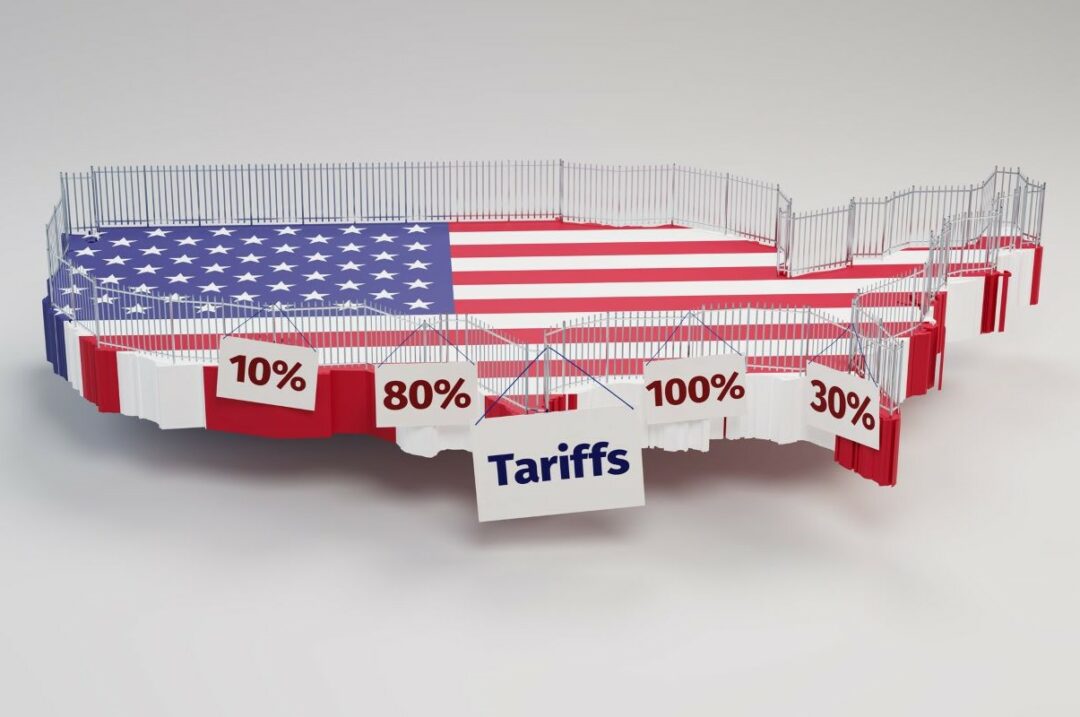Image via Supply Chain Brain
***
In response to President Donald J. Trump’s tariffs on Chinese goods, China has recently implemented new tariffs on coal and liquefied natural gas (LNG) imports. These tariffs are set at 15% for coal and LNG, and 10% for crude oil, agricultural machinery, and certain vehicles. Along with these tariffs, China has placed trade controls on “25 rare metal products,” including molybdenum and indium-related items. These materials are notably used in the production of low-carbon technologies, such as wind turbines and solar panels. While some contest their effectiveness, wind and solar energy production in the U.S. has tripled in the last decade. Therefore, these tariffs and trade controls will impact clean energy supply chains and global controls on fossil fuel usage.
In recent decades, trade has been a key factor in the movement toward clean energy, though these tariffs now threaten that progress. While tariffs on Chinese energy products are not new (the Biden administration imposed tariffs on Chinese electric vehicles), they were previously paired with subsidies for domestic clean energy manufacturers. But Trump’s significant expansion of tariff targets has led China to impose trade controls on products crucial to U.S. clean energy. The Trump administration has also promised to cut spending on clean energy, counteracting investments in renewable and electric vehicles by the Biden administration.
Two global superpowers, the U.S. and China are the major competitors in the world’s race for AI technology. The tariffs imposed by both countries could greatly affect the competition. Doug Burgum, United States Secretary of the Interior, believes the tariffs will cause the U.S. to lose the AI arms race unless it is supported by increased fossil fuel usage. Notably, the eagerness of the U.S. to lead in AI has contributed to a surge in the countries’ electricity consumption. With the recent rise of Deepseek, a Chinese AI company with a low-cost, open-sourced model ramping up competition, the U.S. is facing one of its greatest challenges yet in maintaining its lead.
AI aside, the U.S.’s growth in clean energy usage will likely be undermined by a surge in energy prices. While U.S. energy exports to China are an essential tool in reducing our trade deficit, the increase in drilling due to Trump’s “drill, baby, drill” mentality will be expensive. The U.S. may face significant setbacks in its clean energy progress due to rising energy prices and the Trump administration’s push to prioritize fossil fuel development. Further, Trump’s stance on increased fossil fuel extraction and his desire to exit the Paris Climate Agreement could slow efforts to transition to renewable energy. Combined with tariffs on essential materials, these policies threaten to drastically derail the growth of clean energy, which could ultimately hinder the U.S.’s ability to compete on the global stage in both clean energy and AI technology development.But while these tariffs have the potential to disrupt the American economy, the Chinese economy will likely not be affected—at least as much—because their clean energy economy is on the rise. According to a BloombergNEF report, China, on average, produces electricity 11-64% cheaper than other countries, and their costs associated with clean energy technologies are expected to continue declining. Specifically, the cost of clean power technologies is projected to decrease an additional 2-11% in 2025, and even up to 22-49% by 2035. This trend positions China to maintain a competitive advantage in the sector despite trade tensions, thus making it possible for the global shift toward renewable energy to persist despite the actions of the U.S.
***
This article was edited by Anna Gehres and Kailee Pierce.
